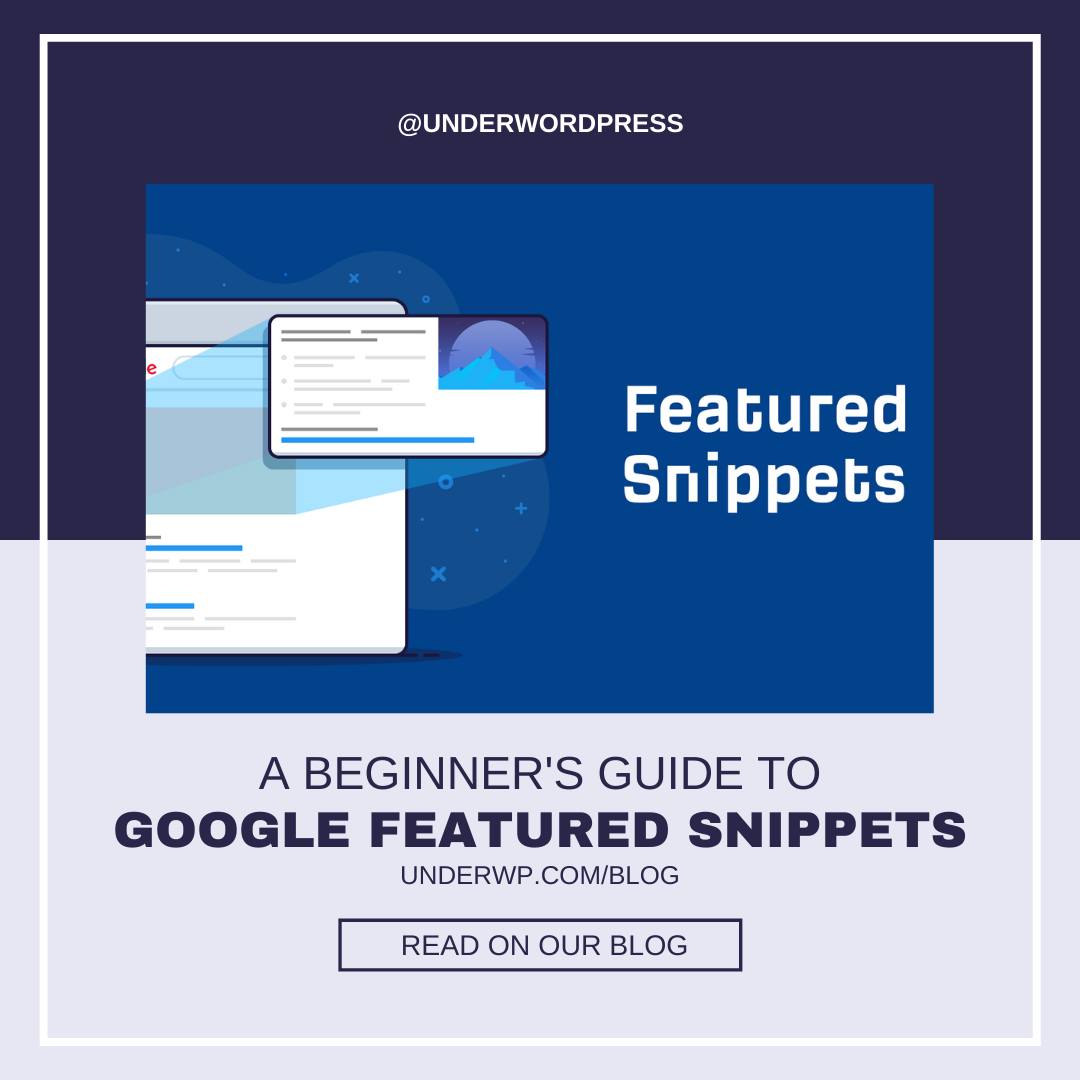Did you know that Google already has the answer to your customer's question? You're probably thinking that you can outrank Google because it's something they don't have, but I would think again.
Why? Because the answer is staring right at you in the search results.
More and more websites are implementing featured snippets which are answers to customers' questions displayed in a special box above the search results.
This implementation will boost your click-through rate and conversions, giving you more traffic from natural search engines.
Featured snippets help the user complete a search query without clicking through to another page.
When it comes to SEO, there's a lot of jargon out there. There are also some pretty important differences between features that are often mistaken for one another.
We will also see in this post the most common misconceptions between featured snippets and rich snippets.
What are Featured Snippets in SEO?
A featured snippet is a brief excerpt of text that appears above the organic Google search results.
Its job is to give the user a quick answer to their question.
An example of a featured snippet is shown below:

The content in featured snippets is extracted from the website that shows up first in the search results.
Featured Snippets vs. Rich Snippets
Featured and rich snippets are two different types of special search results.
A featured snippet is a search result that shows up above all other results and includes extra information relevant to the query.
Featured Snippets, which appear at the top of the page, are usually used to answer a question like “What is SEO?” or “How do you SEO?” They are often written in a list format, such as “Top 5 SEO Tips” or “5 Things You Need to Know About SEO.”
Featured snippets don't display under the title of a page—instead, they're shown above it in what's known as position zero. They can contain any kind of relevant information gleaned from a site—a definition or an answer to a question.
A featured snippet is also known as google snippets sometimes, displays more information than a regular link, but that information is gathered from authority websites of the niche.
One thing to keep in mind is that featured snippets do not always appear—only when Google believes that there is a high-quality answer to the user's question.
Additionally, if there is no content that addresses the user's question directly, the featured snippet will not appear.
Rich snippets are structured data markup that appears in SERPs after entering information into schema.org for your website. Rich snippets are structured data that helps Google better understand your site's content.
Unlike featured snippets, which don't always appear but maybe highly coveted when they do, rich snippets will always appear as long as you enter the structured data correctly into schema.org.
Rich snippets are a little bit more general than featured snippets because they provide information about different aspects of an article or webpage.
For example, if someone searches for “SEO tips,” they might see Rich Snippet that says something like: “5 Ways to Improve Your Website's Rank on Google.”
Rich snippets may include things like customer reviews (for e-commerce site searches), event dates, videos, and even pictures.
Structured data can change how your site's search result appears in SERPs, which can draw more attention to your listing and increase clicks.
There are several tools available to help create structured data for your website to make it easier for search engines to understand your content.
Both types of snippets can be helpful when it comes time for users to decide which link they should click on—but only if they're written well!
Benefits of Featured Snippets
- Increase in Click-Through Rate
Landing the top spot as the featured snippet is the dream of any website owner. Featured snippets are given a larger area than the rest of the search results and stand out. More eyeballs = more clicks.
- Building Authority
If your website appears at the top of the search page then people think of you as an expert. This gives you credibility. People are likely to give your website priority the next time they search for a similar topic.
- Increased User Accessibility To Your Content
Featured snippets are pulled up when you use voice search with virtual assistants like Siri, Google Assistant etc. Over 40% of adults use voice search. This automatically gives you a leg up on your competition to get in front of your audience
- Improve Keyword Ranking
Featured snippets can lead to a snowball effect. Ranking high for one keyword can help you increase your ranking for other keywords slowly and steadily.
Different Types of Featured Snippets
Paragraphs
These are the most commonly seen featured snippets. They include a little text often accompanied by an image.
Paragraph featured snippets are used to give answers to questions like – Who was the first person to do X? What does Y mean? Why did Z happen?
Lists
The list featured snippets are further divided into 2 types – Ordered Lists and Unordered Lists
- Ordered lists are numbered lists in which the position of items can't be changed. These are shown when people look up stuff like recipes “how-to”s or anything else which has to be performed in a particular order.
- Unordered lists are just what the name suggests. These include items that do not need to be in a particular order like ingredients in a recipe or parts in a PC.
Tables
Tables help people to look for certain statistics or comparisons. Google doesn't extract the entire table from web pages, it just takes the part which is relevant to the user.
Video
Google uses YouTube videos as featured snippets too. Either the whole video is presented or Google shows a small clip from the video which is relevant.
4 Tips To Rank In Featured Snippets
- Google Research
Your first step should be to figure out what keywords show featured snippets in Google. Make a list of your findings and shape your content according to the search queries.
- Replicate Existing Featured Snippets
This is the most basic but the most important tip, imitation. Find out what type of content ranks for your keyword and try to replicate that on your webpage. This will increase your chances of getting the top spot.
- Host Your Videos In YouTube
If your webpage contains a video tutorial of your product/services or any other instructional video try to host it on Youtube. Youtube is the go-to place for Google to fetch videos so you increase your chances to rank
- Use High Quality Images
As mentioned before, google shows an image from your webpage along with the text info. Make sure to use high resolution images that are relevant to your topic. You can find a variety of royalty-free images from sites like Pixabay,Pexels and Unsplash
Are Feature Snippets Paid?
Fortunately, Google has not yet started charging for featured snippets. You cannot buy featured snippets on Google.
They can also be called organic featured snippets because the Google algorithm selects the featured snippet content based on the website authority and other ranking signals.
The aim of the featured snippet is to give the user a direct answer on the Google search results page itself. So paying for a featured snippet will fail the purpose of featured snippets.
For now, featured snippets are not paid results. I hope it stays this way.
Final Words
First introduced back in May 2015, featured snippets have steadily expanded across different verticals and countries.
If you want your site to rank for long-tail queries, featured snippets are something you should be tracking in order to stay on Google's good side. Semrush is one tool that can help you track your featured snippets' ranking.
Frequently cited as the gold standard for SEO goals, featured snippets are a big deal.
So do not miss out on this feature of Google and get more traffic from their search engine.
Start implementing the above tips on your website today and get your website content featured on Google search results.




Thank you for claryfying the difference between featured snippets and rich snippets.
One of the most confusing kind of SEO terms for beginners like me. They both are the added whistles and bells for the Google users. Helpful for the users but not so good for website owners. Because not all users will then opt to click on the website when they are getting their answers on the Google itself.